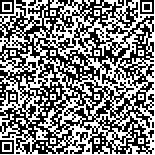马小雨1,2,陈正华1,宿鑫3,于会泳3,贾丹丹1,2,姚焕玫2
1.广西大学 海洋学院, 南宁 530004;2.广西大学 资源环境与材料学院, 南宁 530004;3.山东科技大学 测绘科学与工程学院, 青岛 266590
摘要:
针对GF-4等国产卫星气溶胶光学厚度反演算法存在的地表反射率估计困难、云像元污染等问题,本文发展了一种增强型地表反射率库支持的气溶胶光学厚度反演方法,改进了云筛选与地表反射率确定方案,在考虑GF-4逐像元成像角度的情况下,使用6SV模型与MOD09-CMA数据对季度尺度上的GF-4 PMS传感器数据进行大气校正,提出了百分比最小值均值法建立地表反射率库,并据此建立了NDVI与红蓝反射率关系模型,根据地表反射率的分布特点,当NDVI小于0.2的时候使用地表反射率库估计地表反射率,而当NDVI大于0.2时,则使用NDVI来估计地表反射率。使用MOD04气溶胶模式时空分布确定气溶胶参数。在京津冀地区开展气溶胶光学厚度反演实验,使用Aeronet站点数据与MOD04产品对反演结果进行了对比验证,与Aeronet相关系数R为0.964,均方根误差RMSE为0.13,满足 的点多于78.9%,相关系数与均方根误差优于MODIS暗目标法产品,满足期望误差线的数量优于MODIS暗目标与深蓝算法产品。
GF-4 aerosol retrieval study of enhanced surface reflectance library support algorithm
Abstract:
The multispectral camera carried by the GF-4 satellite was featured by high spatial resolution and high frequency observations. It played an important role in atmospheric aerosol monitoring. The most two mature satellite Aerosol Optical Depth(AOD) retrieval algorithms were Dark Target algorithm(DT) and Deep Blue algorithm(DB).While the former one was limited in the low reflectivity area and 2.1 m wavelength band. An AOD inversion algorithm was developed in this work based on the enhanced surface reflectance library support algorithm by using GF-4 data. The key question of AOD inversion were the estimate of surface reflectivity and the assumption of aerosol types. The MOD09-CMA data was applied to perform atmospheric correction with Second Simulation of Satellite Signal in the Solar Spectrum Vector(6SV) model for GF-4 data. To make more accurate, it was specified that no treatment be performed in the condition of cloud and high aerosol load. A quarter-period reflectance library for the GF-4 data was synthesized using the percentage minimum mean method. The surface reflectance library was reanalyzed to obtain the relationship model between NDVI and red, blue reflectivity. We used NDVI to determine surface reflectance when NDVI was greater than 0.2 and used static surface reflectance library to determine surface reflectance when NDVI was less than 0.2.The aerosol type parameters were determined by the MODIS global spatial-temporal distribution map in terms of aerosol types. The algorithm was validated against two datasets: Aeronet dataset and MOD04 products. Statistical analysis of the validation results was based on the linear regression model using the goodness-of-fit indicators: correlation coefficient(R), Root Mean Squared Error( ),and Expected Error( ). The accurate values in this works were derived with R:0.964, RMSE:0.13, and the percentage of falling within was more than 78.9%.The and RMSE was better than the MODIS-DT product, which was slightly worse than the MODIS-DB product. Compared with the MODIS-DB and MODIS-DT algorithm, our algorithm fell more in the expected error line. The 6SV model was used to simulate the error. It was found that the pixel-by-pixel imaging angle can effectively reduce the error. The surface reflectivity library error was minimum in summer. The change in solar angle was suggested to be considered to build the surface reflectivity library in other seasons. In the mean time, the single aerosol model assumption was one cause of errors as well.


